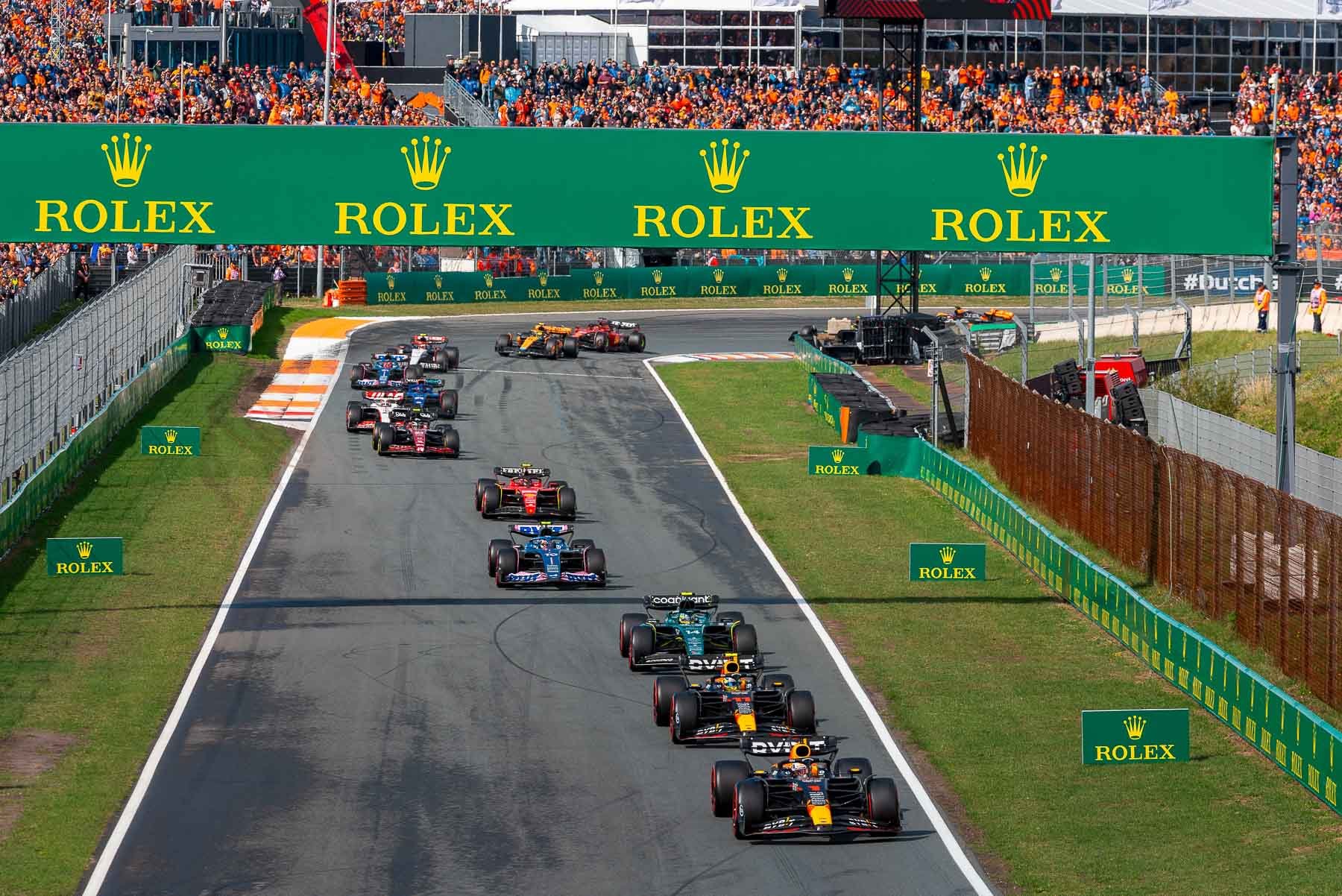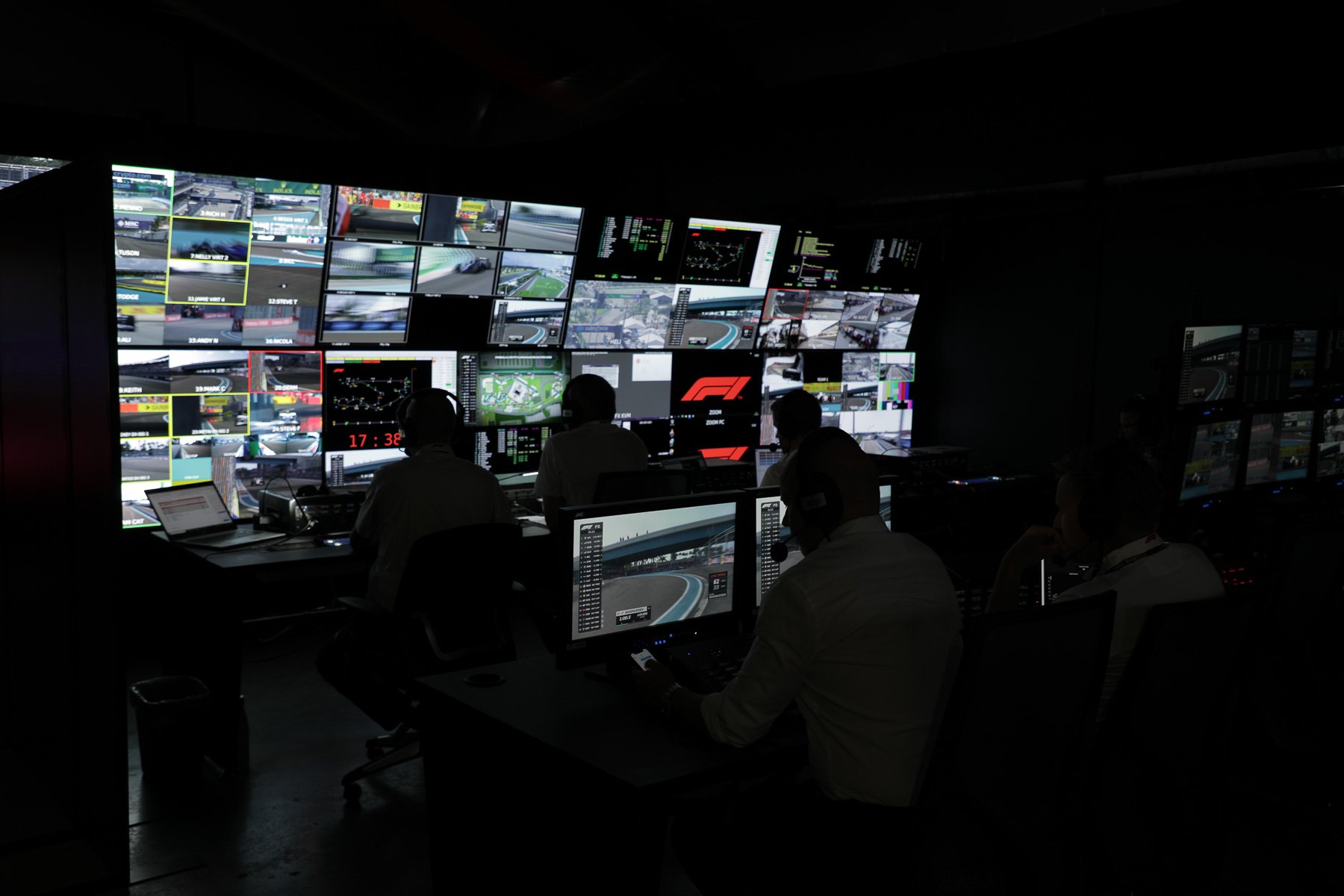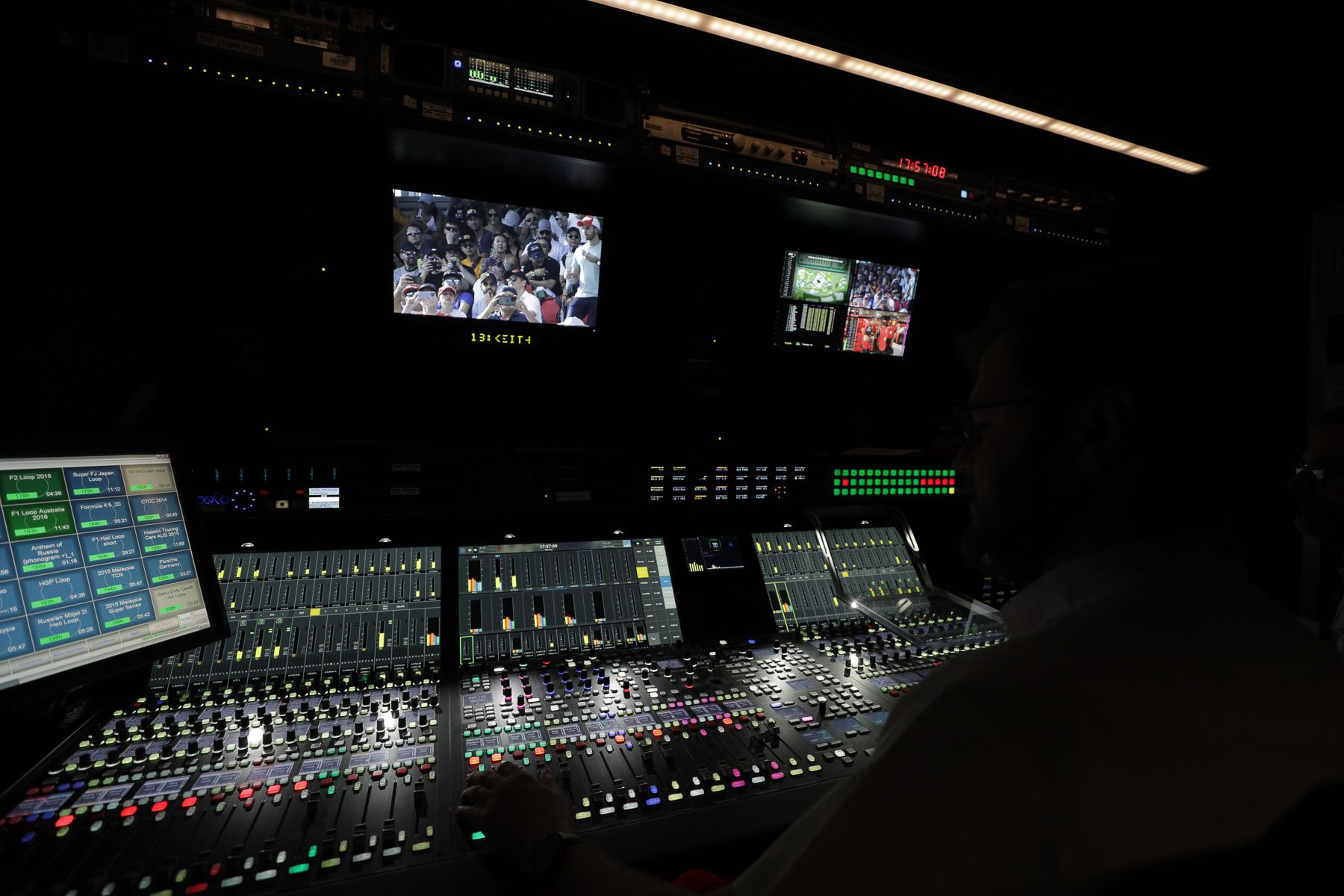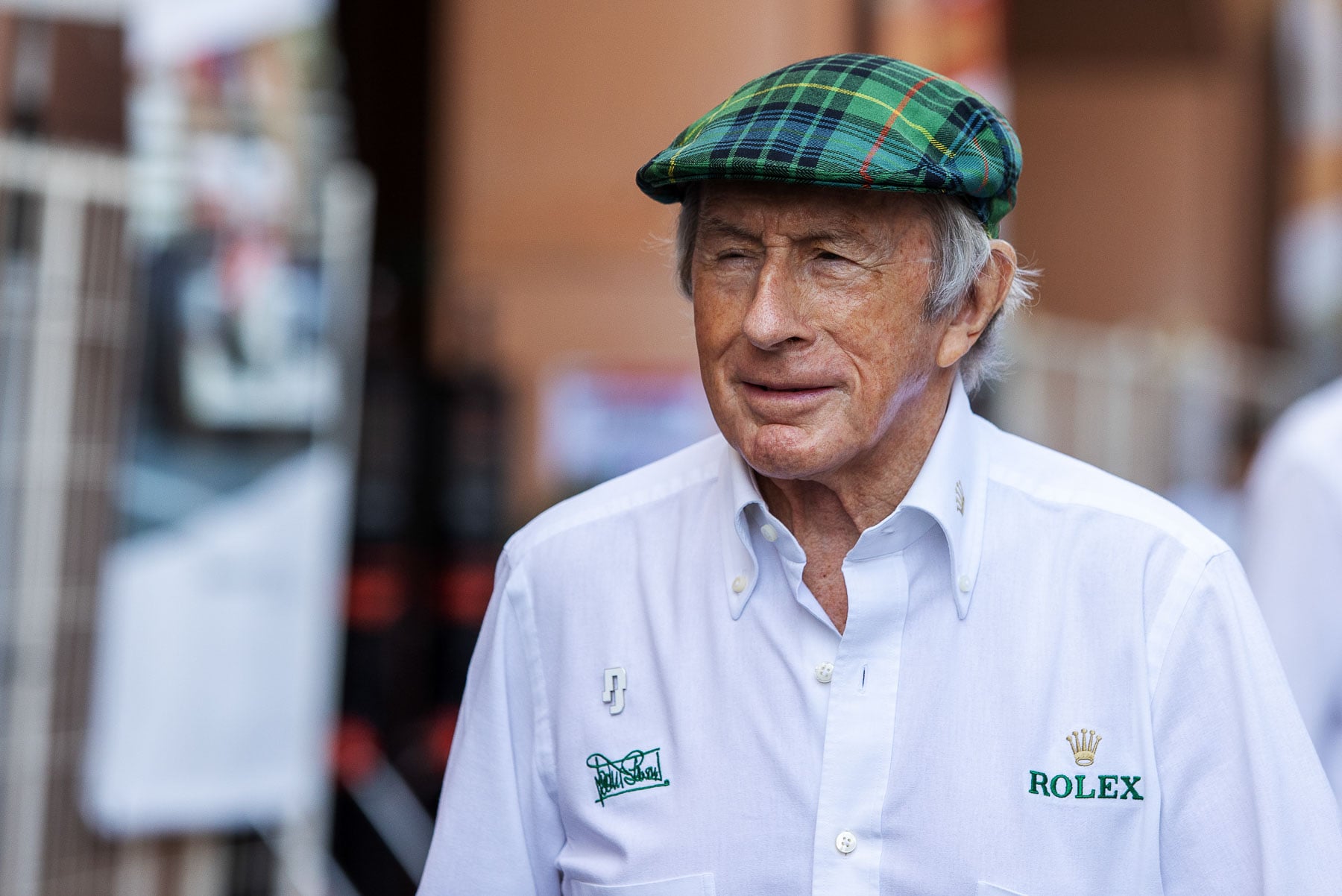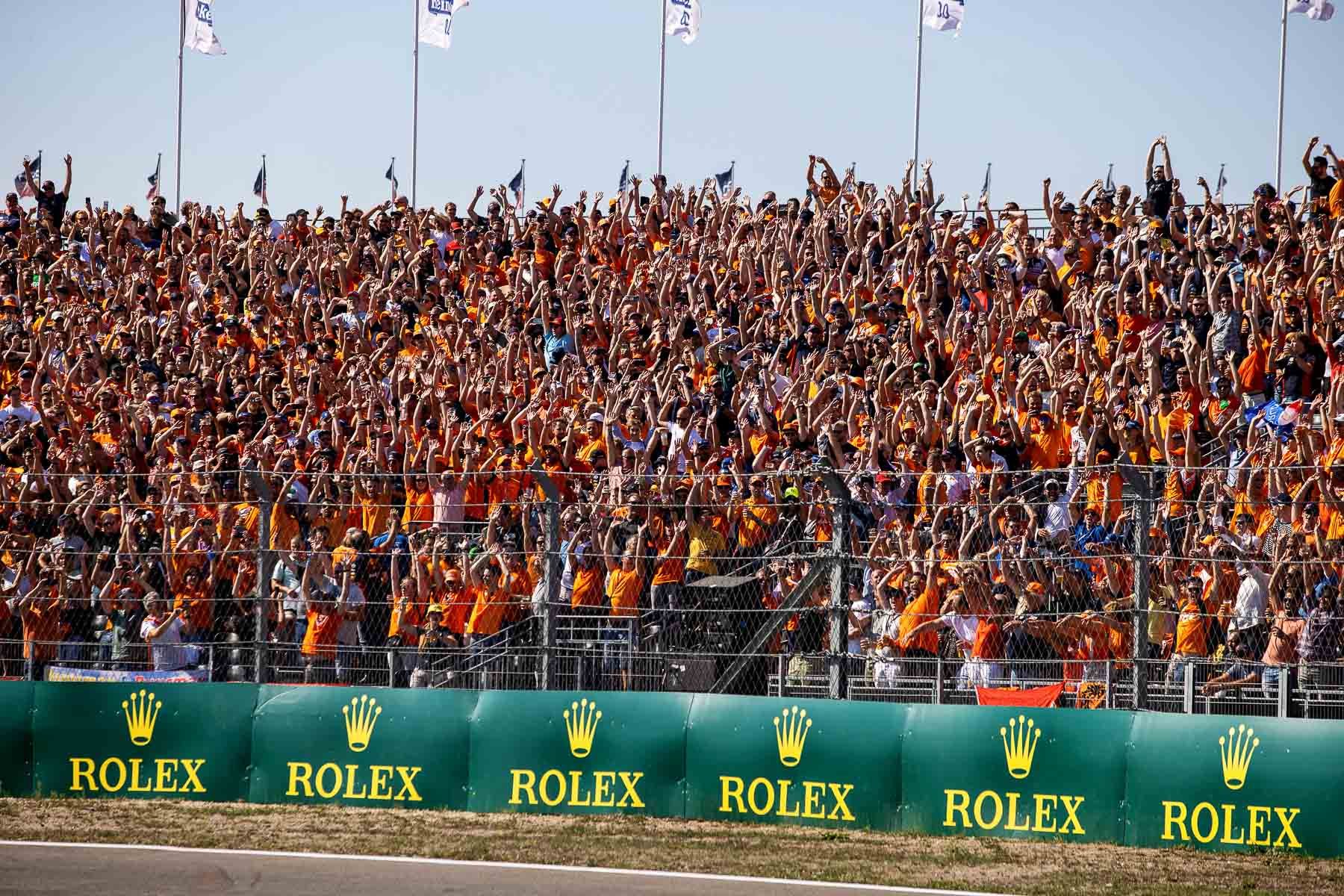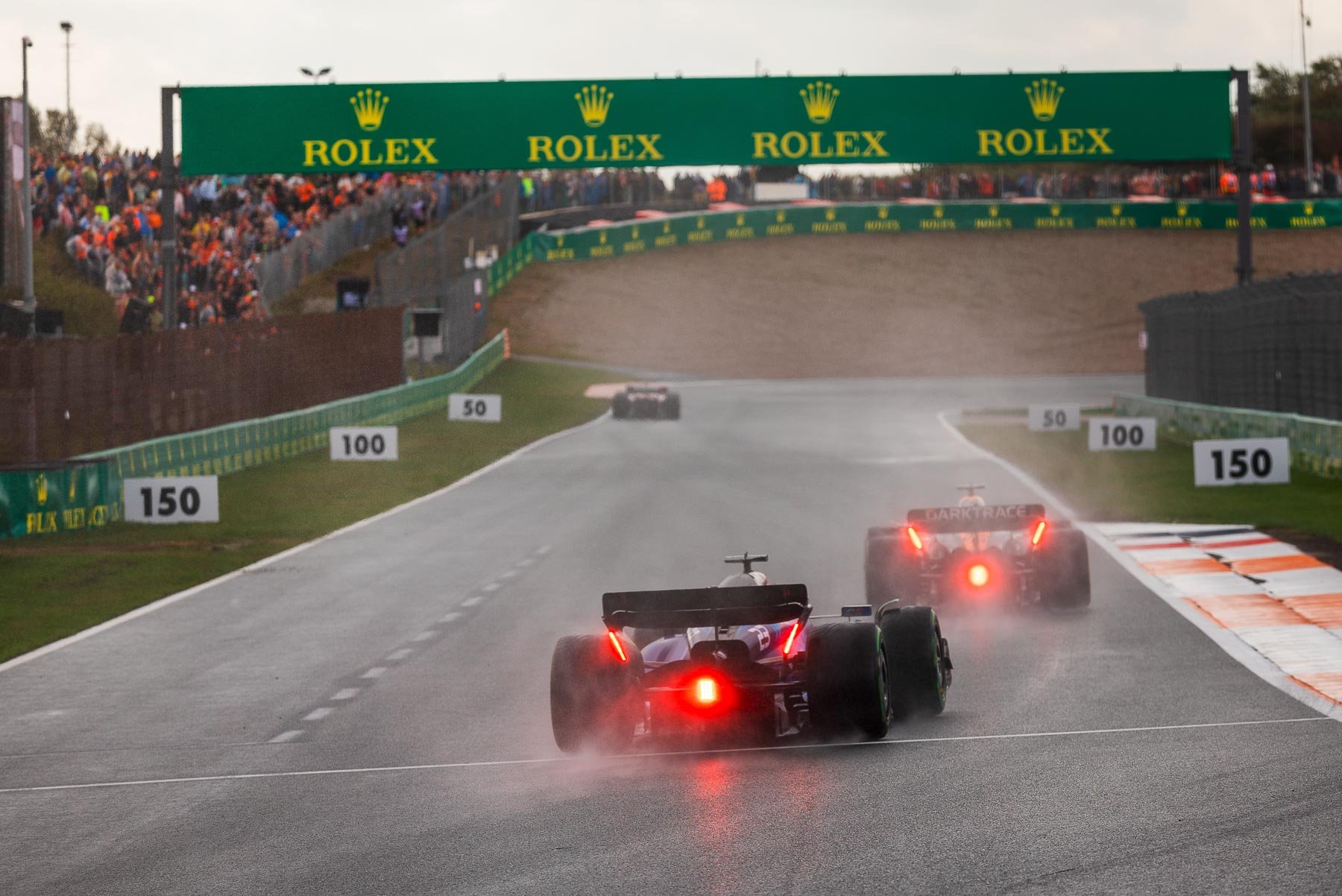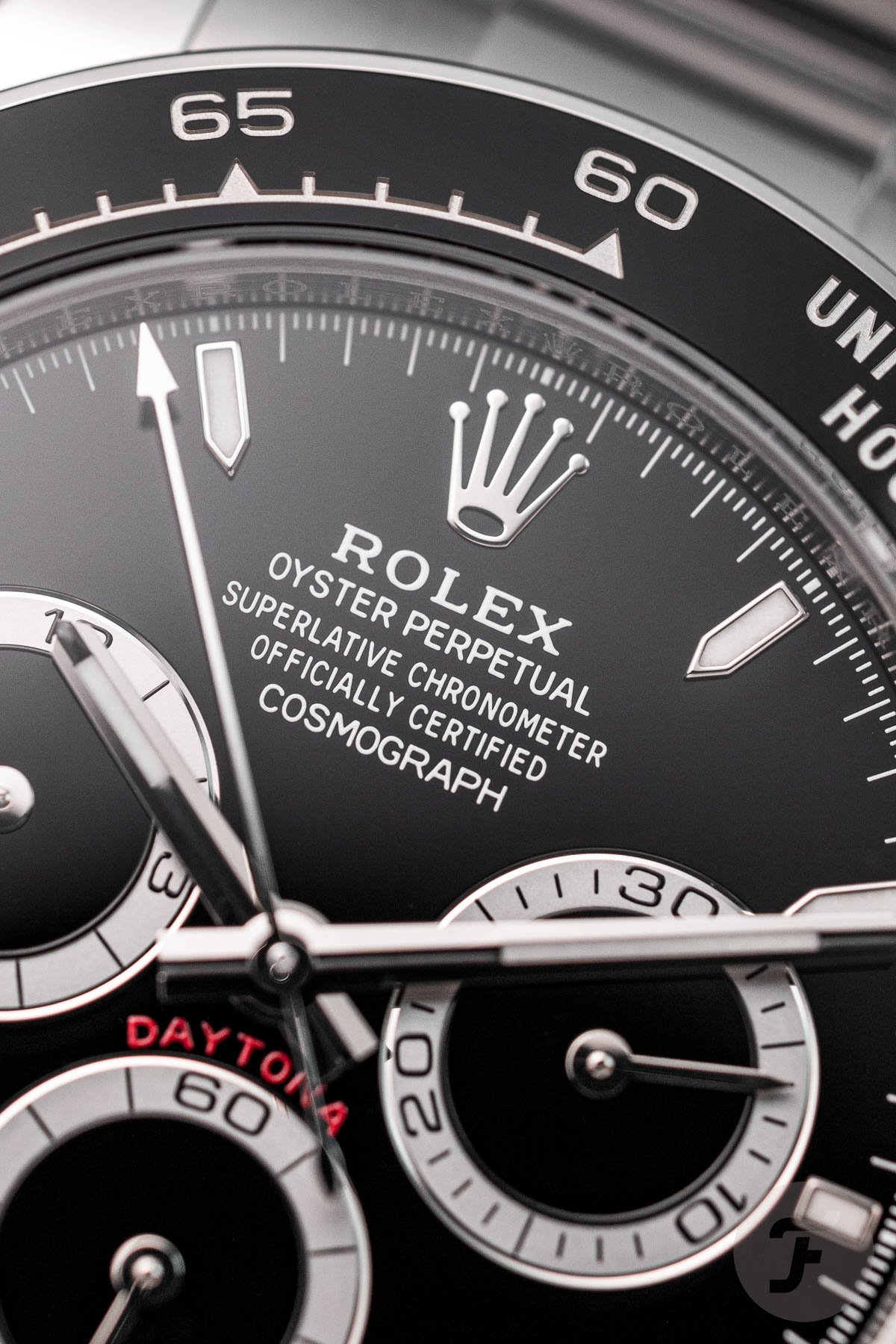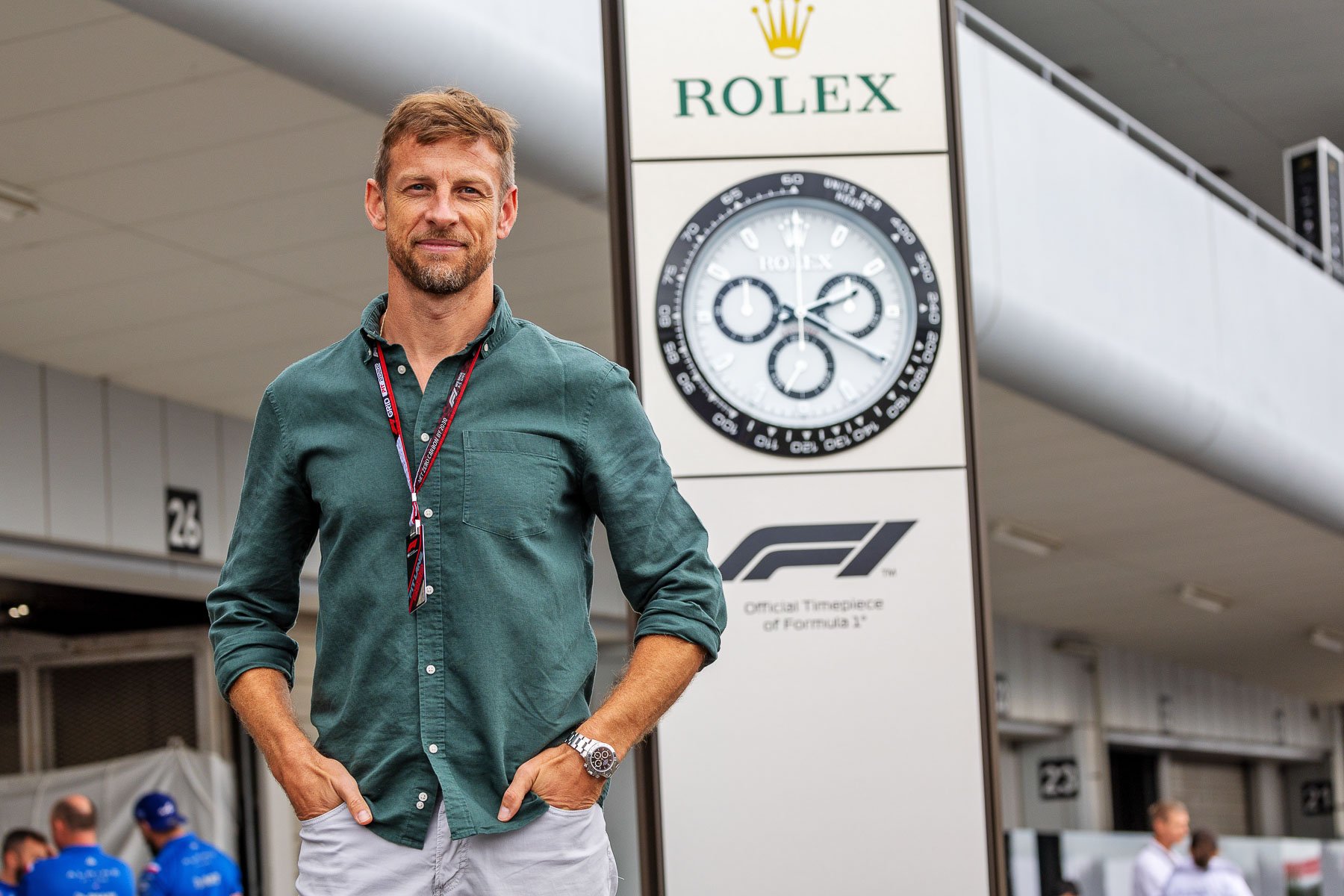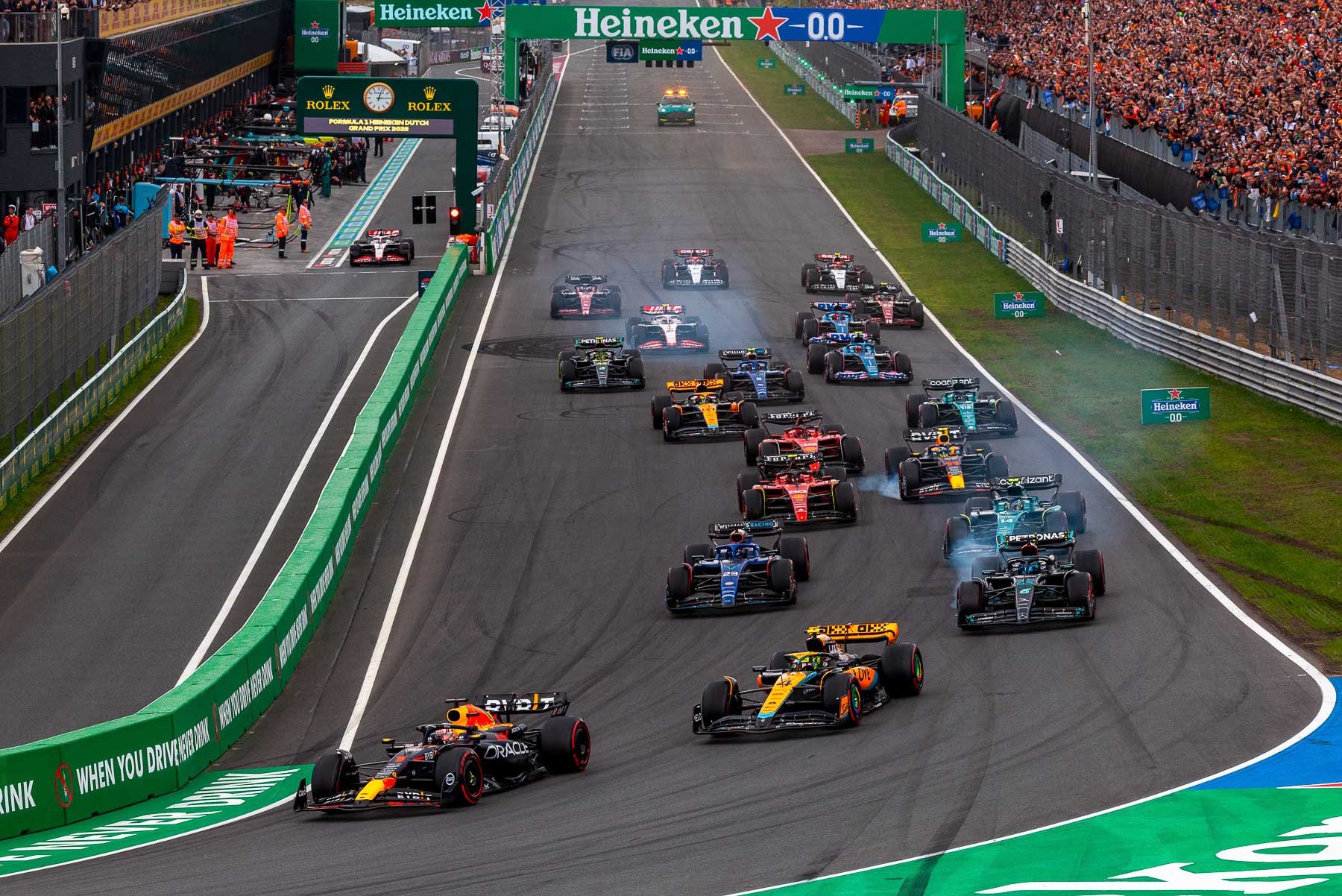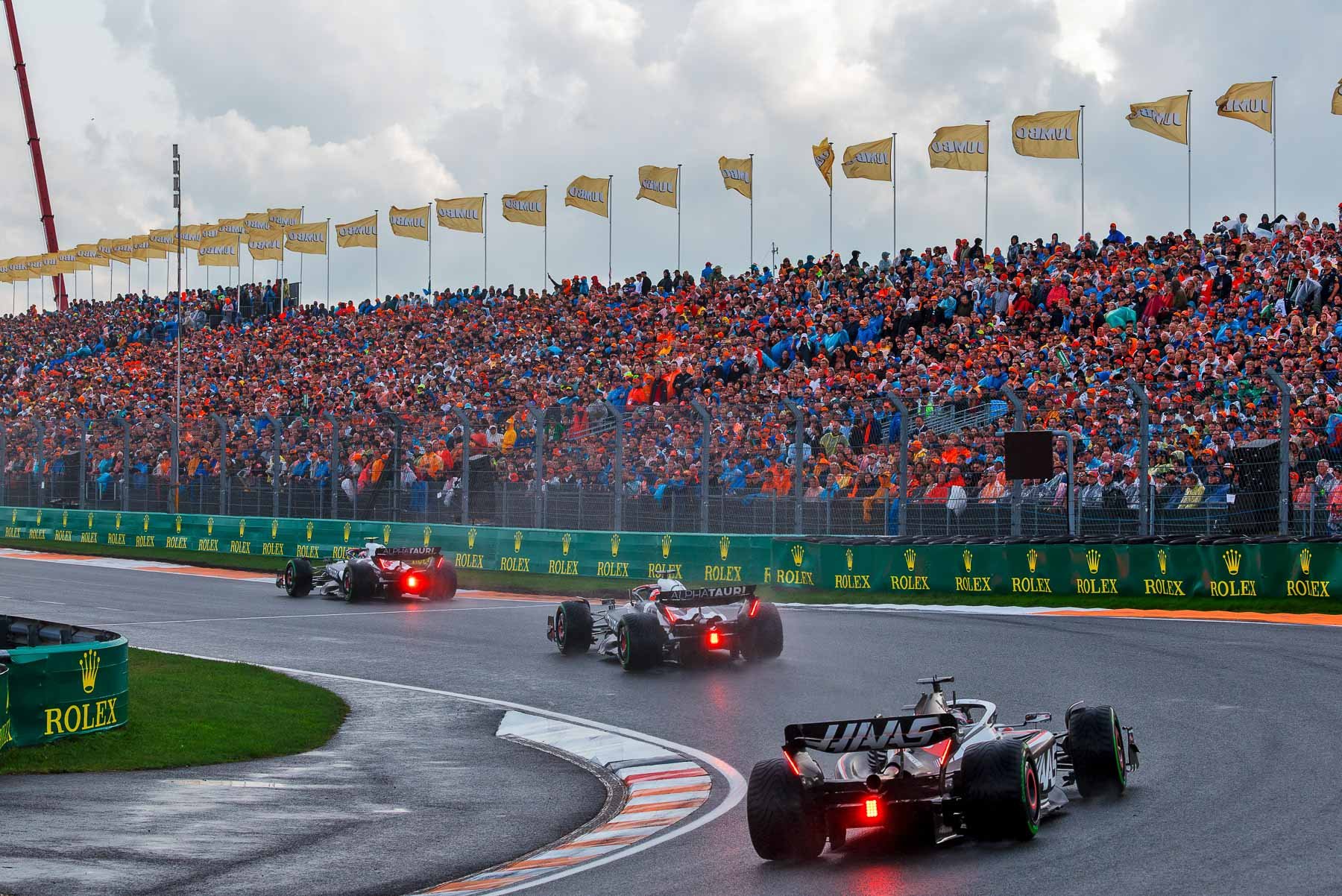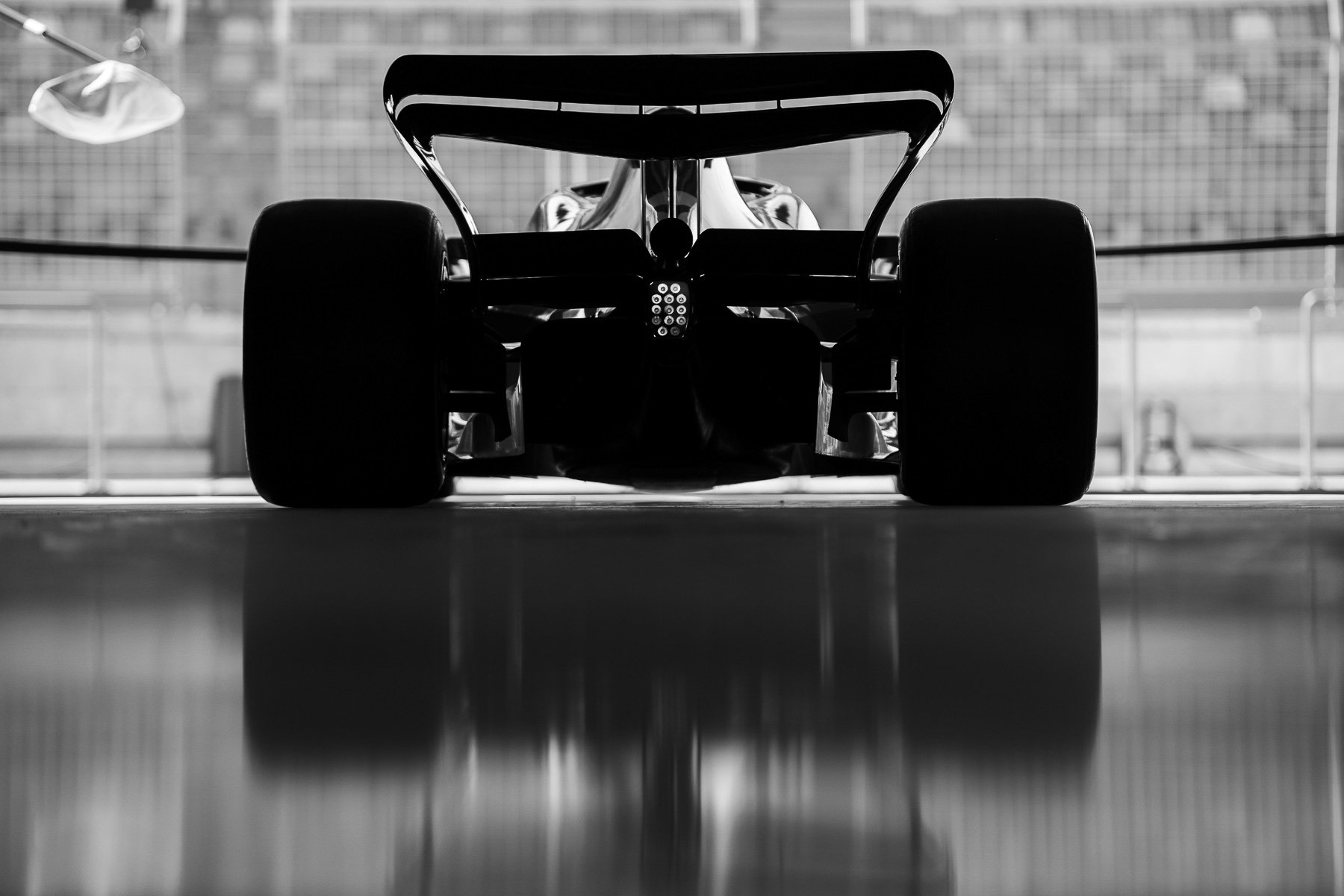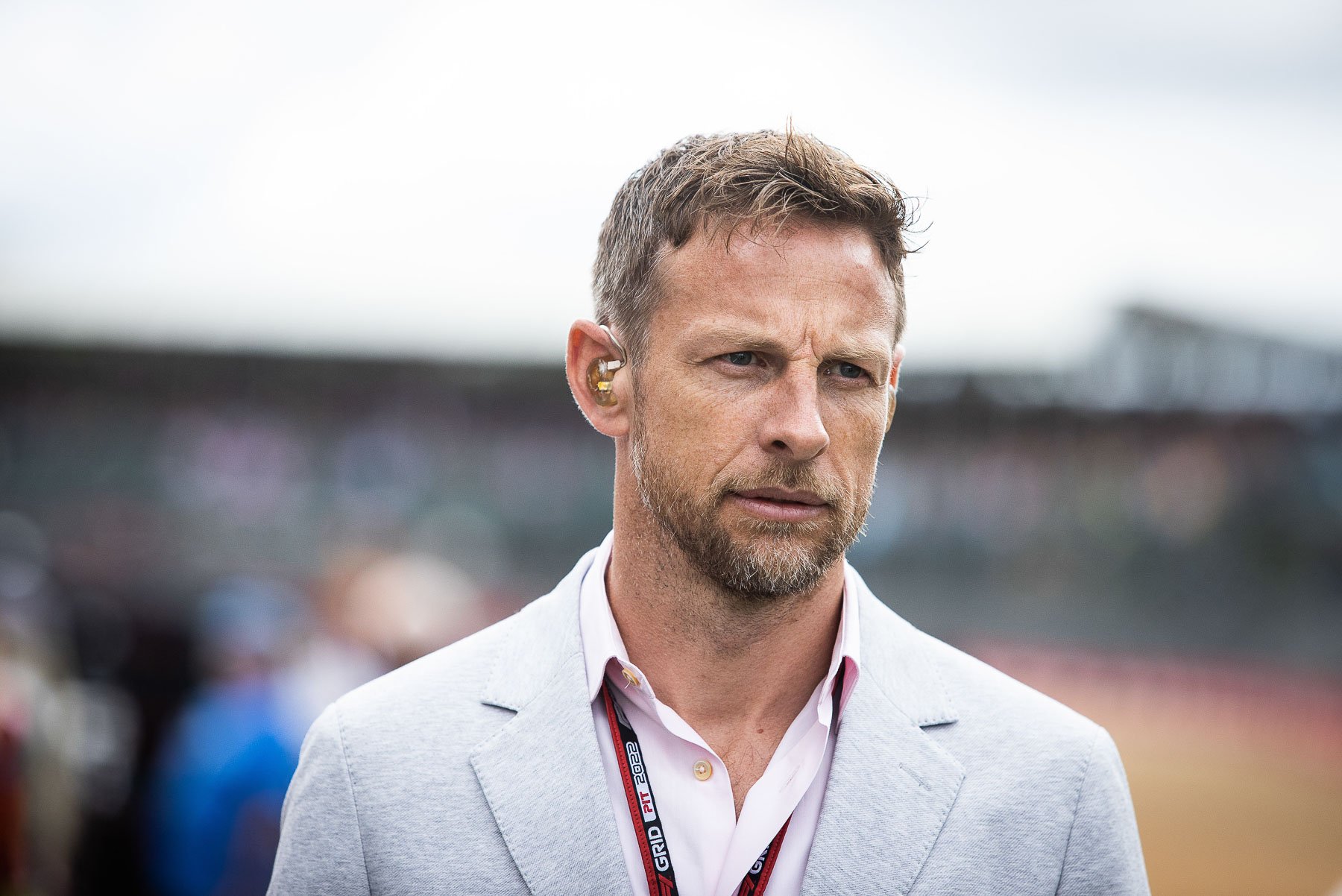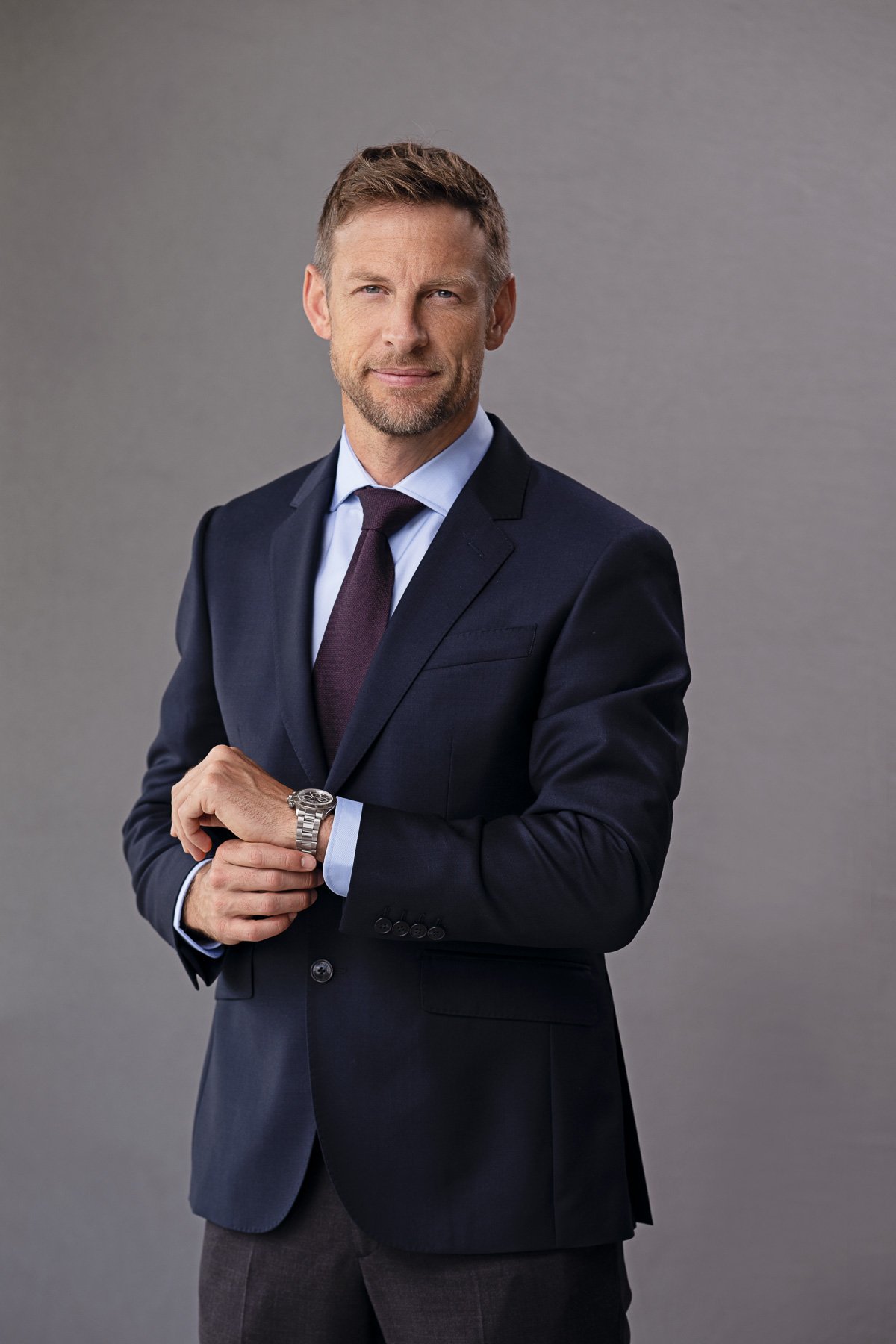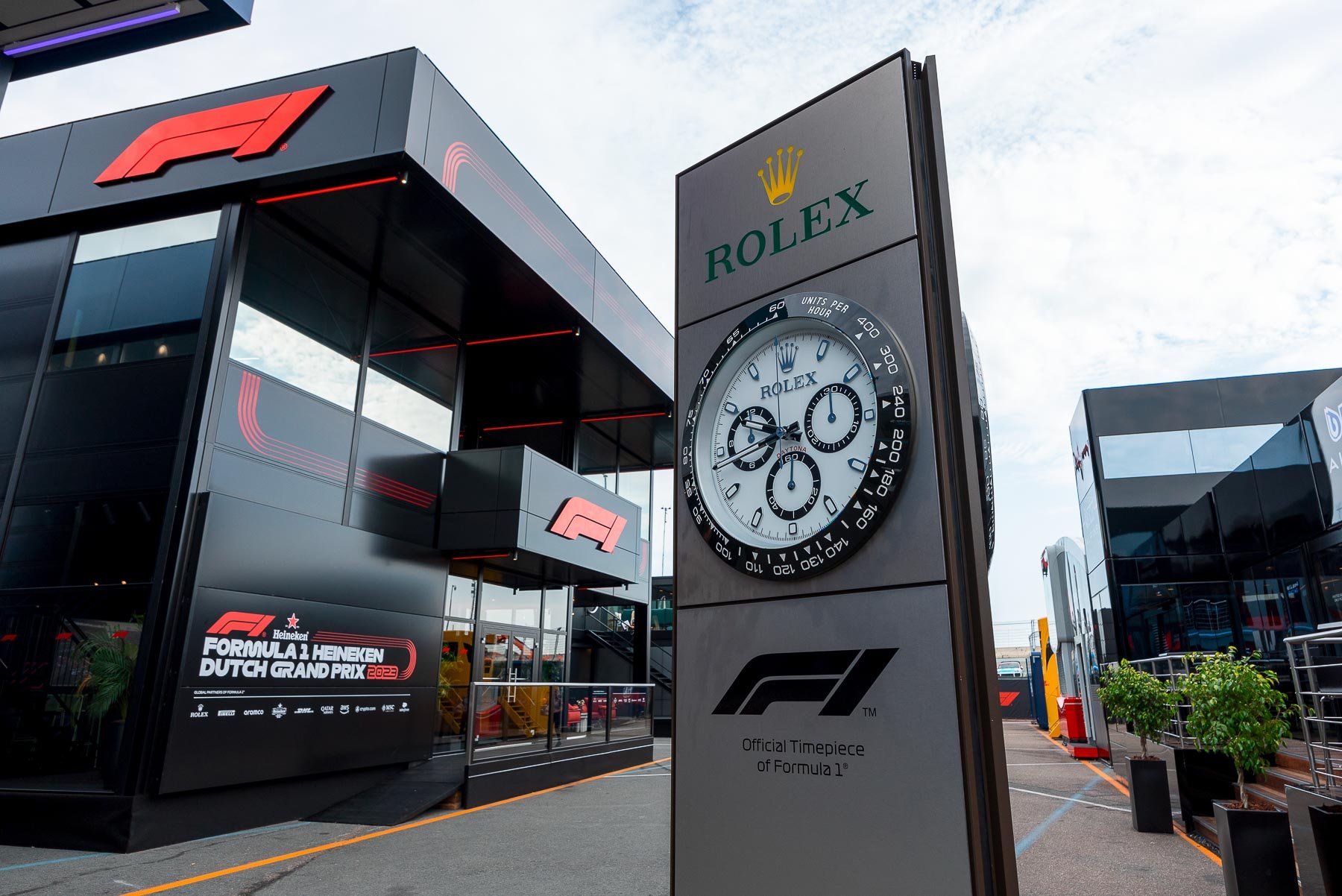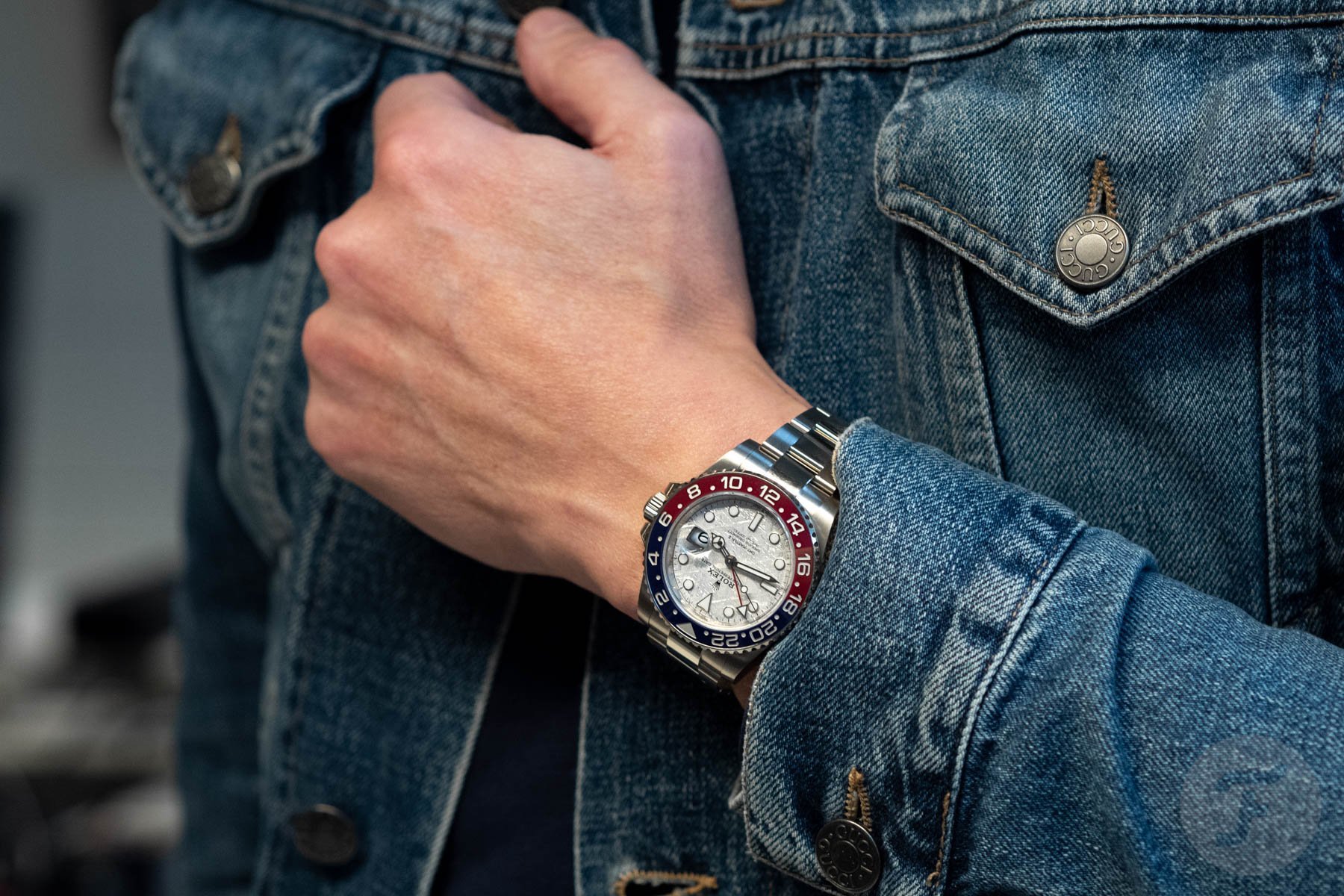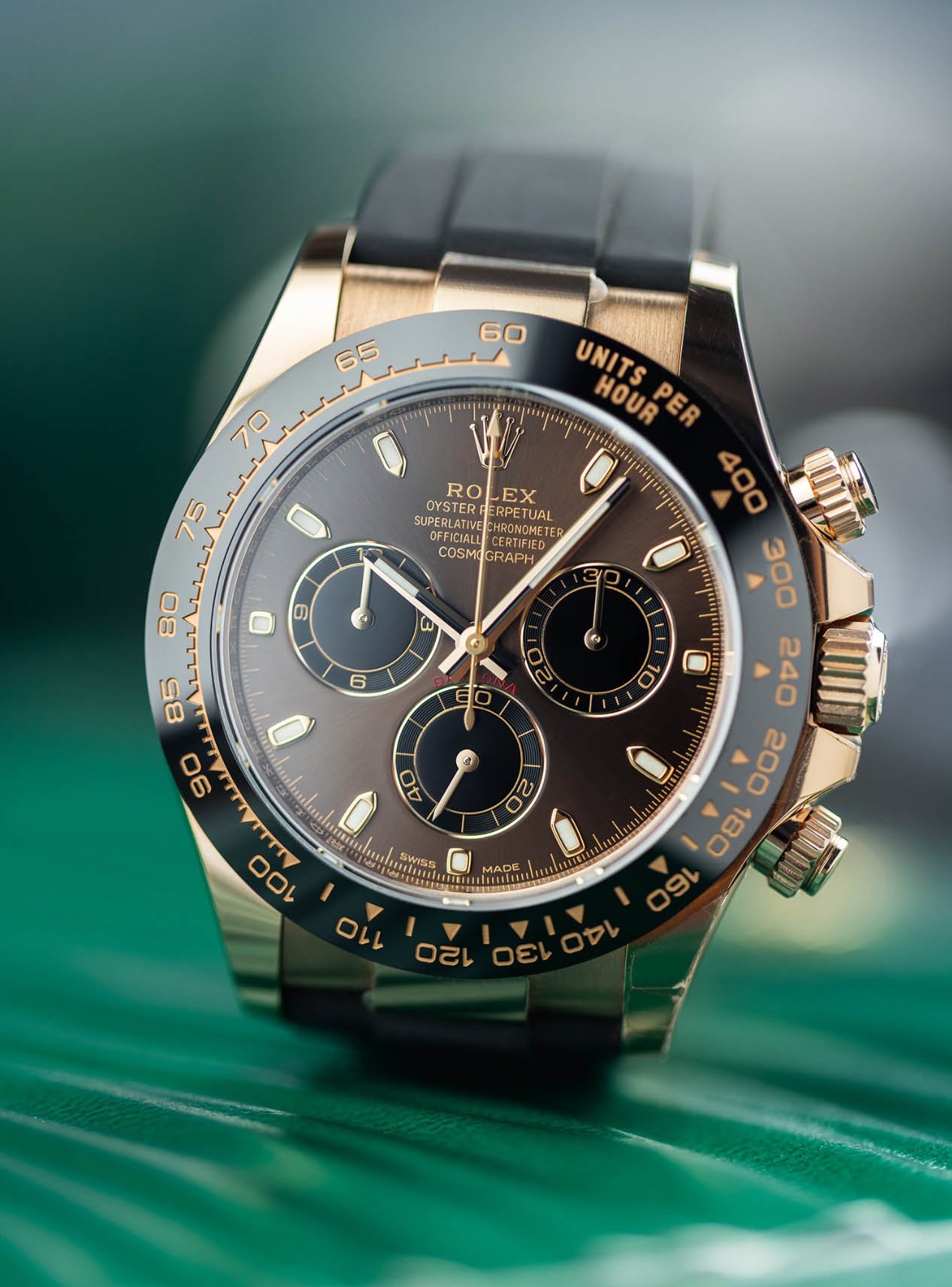Fratello Talks With Jenson Button About Racing And Watches
With the Zandvoort race approaching, I had the opportunity to talk to former F1 World Champion Jenson Button about racing and watches. I am one of “those guys” who only started watching F1 when Max Verstappen entered the competition in 2015. Before that, I occasionally watched it when my friends or roommates were in front of the television to see Michael Schumacher clinch many Grand Prix victories. While it is often held against me that I only got into F1 due to Verstappen, it has now been nearly eight years that I have followed F1 passionately.
F1 Zandvoort
I was able to attend last week’s F1 race in Zandvoort thanks to an invitation from Rolex. Zandvoort has a race circuit from 1939 that was an official F1 track from 1952 until 1985 (Niki Lauda won the GP that year). After a long pause of 36 years, it returned to the F1 Grand Prix calendar in 2021. The Zandvoort track is located near the sea and surrounded by dunes. It has 14 corners and a length of 4.259 kilometers. Verstappen won the Zandvoort F1 Grand Prix in 2023, and I witnessed his victorious race in the rain. It was his ninth consecutive win and the third time he won the Zandvoort Grand Prix since 2021.
Access to the paddock
Rolex gave me access to the racetrack on Friday and Sunday. Friday is when the F1 cars do their practice laps. On Saturday, they do the qualifications, and Sunday is race day. If you’re reading this article, though, I assume you know the schedule. Friday was a sunny day, and with the FIA media pass, I had access to the paddock. I also had (temporary) access to the media broadcast center where they edit and direct all the footage from the race. It’s an impressive mobile office unit with tons of server equipment connected via two fiber connections to the media center in Biggin Hill (UK), from where everything is broadcast to the rest of the world. Over 150 staff members are involved in the F1 media center.
Race control
Another impressive visit on Friday was to the FIA race control room. Located just behind the podium, we find a room with several rows of screens following all the cameras on the track. FIA race director Niels Wittich and his team ensure everything goes according to the rules. All decisions that race director Wittich makes are executed by Claire Dubbelman, who is also part of the race control team. It’s a stressful job in which decisions must be made with 100% confidence.
Aside from the FIA and F1 organization, there are, of course, also the teams that have their mobile homes and pits. Interestingly, I was told that teams have the same equipment duplicated per continent where they race. So in Europe, for example, they travel around with big trucks with all the freight. Everything will be transported from Zandvoort to Monza in trucks at night. Rolex arranged a visit to the Alpine team and made it possible for me to look inside the pit box. It was interesting to see that when the race isn’t happening, the team constantly practices the routine for changing tires and so on. Inside the pit box, I received a headset to listen to the communication between the team and the driver during the practice laps.
Race drivers
Walking around the secured paddock area also makes you aware of how close you can get to the drivers. While strolling around, I saw drivers Daniel Ricciardo, Zhou Guanyu, Max Verstappen, Sergio Perez, and Yuki Tsunoda also moving around. Though they have superstar status, I noticed that some still take the time to take selfies with fans and give autographs to kids. The legendary Sir Jacky Stewart can even be found signing autographs or taking pictures with race fans.
Just over 300,000 people visited the Zandvoort Grand Prix during the weekend. Sunday was noticeably the busiest day of the weekend, of course. It surprised me that some of the teams still welcomed guests and showed them around in the pit box, even when the pit crew must’ve been under incredible stress.
Rolex and F1
Rolex had an incredibly lovely space in the Paddock Club where I could watch the race. There’s the balcony outside with a view of the starting grid and the first corner, and inside the Paddock Club, the entire race could be followed on massive screens. You will probably get the best overview of the race from your comfortable seat in front of the television, but the atmosphere at the track, the sound of cars whizzing by, and the excitement from all the spectators are hard to beat.
With the heavy rainfall in the last few laps, it became even more exciting and worthwhile standing outside the Paddock Club to witness the cars having trouble making the turns. A restart was called for, but nothing could stop Verstappen from winning this 2023 Zandvoort Grand Prix.
Daytona
Rolex has a longstanding history with motorsports (hence, the introduction of the Daytona chronograph in 1963), and the brand has been one of the main sponsors of F1 since 2013. The big Rolex clock shows that it’s time to start the formation lap every race. Around the track, you will find the crown logo everywhere, and millions of spectators are aware of Rolex’s timekeeping role. The connection with performance and timekeeping is something that the brand is deservedly proud of.
Conversation with Jenson Button
As I mentioned in the introduction, I also spoke to the 2009 F1 World Champion Jenson Button.
————
Fratello: You left F1 in 2017, but do you still watch every Grand Prix? And if so, who are, to you, the most talented drivers today?
Jenson Button: I do. And the reason is that I’m a pundit for Sky Sports F1, so I need to know what’s going on. It’s important that I have information on qualifying and the race, so I do follow.
You know, everyone will say Max is the best driver. Well, he’s in the best car, isn’t he? But he also has a teammate that’s in the best car. So Perez wasn’t able to extract what Max could extract from that car. Yeah, if you remove Max from the equation this year, they would have a lot fewer wins, and they haven’t had that many one-two finishes.
Max is an exceptional talent. Adrian Newey, who designed the car, will say, “This is the perfect setup for it. This is where it’s at; it’s peak downforce level.” But most drivers will get in that car and go, “It’s got way too much downforce on the front. We need to take some front end out of it.” In doing so, you get a car that is more balanced for you as a driver, but you’ve taken away the overall downforce of the car, so you’ve lost lap time. Max, on the other hand, can jump in it, and he’ll go, “Right, I’ll drive it where it’s at its peak.” And he’s one of the only drivers who can do that, so that’s where his strength lies.
Next is Lewis, you know, because to have won with multiple teams in the sport and to have been at the top of his game for so many years is fantastic. He’s with a great team, but he always delivers. And you know I was teammates with Lewis for three years, and I got to see his strengths and his weaknesses. I think he has a lot fewer weaknesses now, but he’s such a talent and still going strong. He still pulls, you know, still does the lap time, still gets the results in the races. He’s the complete package.
Yeah, it’s difficult to pick three because there are many young talented drivers, but I’ll go for the most complete drivers in the sport. The other one would be Fernando Alonso, who, again, I’ve been teammates with, so I know how he works. He has a very different way of working than someone like Lewis Hamilton but is super talented in terms of the way he drives and the way that he thinks about a race. He’s always thinking about the next move, like in a chess game. And he’s also very good at setting up a car. So those three are the standouts, the most complete drivers. There’s so much talent, young talent coming through, though, you know? George Russell is great. Lando Norris is great. Charles Leclerc is great. Piastri is coming through, and Alex Albon is great. I think there’s a really big pool of talented drivers in the sport, probably more than we’ve ever seen before. But those are the three that have obviously shown their hand and dominated for many years.
What makes it interesting
Fratello: You said in an interview with Car and Driver that “in F1 the most important person to beat is your teammate because you’re in the same equipment.” It’s often something I wonder about; would Max Verstappen beat Lewis Hamilton if they had the same car? Would it be more interesting to you if every F1 driver had the same car performance? Or is F1 also partly about the construction by the teams?
Jenson Button: I don’t think people would be so excited if all the cars were identical because it’s a spec series then. So people support teams as much as they do drivers. From a driver’s point of view, yeah, it’s obviously more interesting because you can see who is actually the best. But then again, you also have cars that suit certain drivers. I think if you put Max in a Mercedes, he’s probably not going to be as quick as Lewis. If you put Lewis in a Red Bull, Lewis won’t be as quick as Max. The cars have been developed around those individuals, and they’ve had a hand in their development, so it’s a full team effort. You know, you can’t win without a good car, but you also need the best driver in your car to get the maximum out of it.
Fratello: Also, based on the quote above, who was the teammate that inspired you the most in F1?
Jenson Button: I was very lucky in my career to work with three world champions — Jacques Villeneuve, Lewis, and Fernando. Um, it’s a tricky one. You know, the teammate that I worked best with and who I thought was just a genius when it came to setting up the car was Rubens Barrichello.
That’s the reason why I think Michael wanted him as a teammate for so long. He was very good at understanding how a car feels and how to develop that car. So for me, that was a great partnership, and we were together for four years in F1, and obviously, that’s when I won the 2009 World Championship. I mean, with Lewis, it was great because I could find his weaknesses. He was in kind of a vulnerable position then because he was still very young. He thought it was his team. Then I came into his team and was quick and made him feel a bit uncomfortable, so I could play on his weaknesses. Fernando didn’t really have any weaknesses, but I could play the game. Fernando, I think, can destroy a young teammate because they’re just not mentally strong enough, whereas I was, and I could play the game as well as he could. So I really enjoyed that partnership. And we were at a point in our career where we were driving a slow car. And we’re both competitive, so all we had was to try and beat each other. That made that a fun partnership.
But I’ve had some great teammates. And, you know, Checo was also my teammate. He was quick on occasion but didn’t have the consistency that the top guys have.
Changing times
Fratello: Is there anything that new/young F1 drivers are missing out on today that was around in the early 2000s?
Jenson Button: There’s so much information fed to the drivers now. There is so much simulation time. You can’t think for yourself. For me, with the way that I looked after the tires and saved fuel, a lot of it was me learning my way through the sport. It was a strength of mine because nobody else had that information, so I could find ways of getting from the start of the race to the end quicker than most. While I didn’t have the outright pace of a Lewis Hamilton, I could think my way through a race, and I could look after the tires at the start of a stint and then push them really hard at the end when it mattered.
There was a bit more freedom with how you could run a strategy in a race. I think the drivers now are missing out because they never drove a V8. They never drove a V12 engine. And the cars are quick now, but it’s a V6. It’s a 1.6-liter V6, which is crazy. Most road cars have got a bigger engine than that. When I raced, it was a three-liter V10 and then a 2.4-liter V8, and it sounded amazing. But also, the cars were so light. They were 600kg with the driver, and now they’re 800kg with the driver. So they’re definitely missing out on that nimbleness that we had. But you know, they’re also driving the quickest cars we’ve ever seen. They’re just a lot heavier, but they have more downforce and more power.
Fratello: And what benefits do drivers today have?
Jenson Button: This outright speed and the fact that the sport has moved on in terms of technology and popularity. But when it comes to drivers, most of us love racing, and the other stuff is secondary. I think it helps with earning now because you have so much more interest in the sport, especially in America. So your social following is much bigger. We have social media, which we didn’t have 20 years ago, so it’s easier to get personal sponsors if you’re allowed to. Most of the time, the teams sign you up and say, “We own you because we pay you this amount of money.” There’s more money now. But there was back in the day as well when we had the dreaded cigarette and alcohol sponsorships. There was a lot of money in the sport, then it went through a bit of a lull, and now it’s peaked again. So, um, yeah, it all depends on what you want out of the sport. And for most of us, it’s the racing. We love the racing and the way the car feels underneath us, and everything else is secondary.
What happens now…?
Fratello: In a podcast with Square Mile, you said that when you won the F1 championship in 2009, you joined the celebration party but left early to be alone in your hotel and reflect on your career to that point. What kind of feeling dominated? Just sheer happiness or that you had made it and proved skeptics wrong?
Jenson Button: It was a funny one because you would think you’d go and celebrate all night long with the team. But you know, I went to the event that we had. I was there for about an hour just congratulating everyone, and then I left. I was in my hotel room for a couple of hours just by myself, thinking back on my career from when I was a kid up until that point. You know, the struggles at times, the highs, the amount of traveling I did and living away from home, living away from friends…
And you could say, “Well, yeah, but you had the best life in the world.” But you miss out on your childhood, that connection with friends and family. It all goes through your mind along with the feeling of relief of finally winning the world championship. It’s a lot of emotion, a lot of tears. “I set out to achieve this. I set out to win the world championship. I’ve done it. I’ve just achieved the goals that I’ve had since I was eight years old.”
I didn’t plan on what would happen when I woke up the next morning. Do you know what happens then? I didn’t. I hadn’t planned for that. And I think a lot of sportsmen find that, and they kind of struggle in a weird way mentally.
I’m watching Michael Jordan’s documentary The Last Dance (which is great, by the way). Obviously, it’s on a very different level, but it’s kind of the same in that, after that first win, it’s difficult to motivate yourself. And I needed a new challenge. At that moment, I was like, “What’s my new challenge? Defend the title? That’s great and all, but I want another challenge.” That challenge was to drive for a team like McLaren and to drive alongside someone like Lewis Hamilton, who everyone thought was the greatest driver.
So that was the next challenge. The next week, I spoke to McLaren and asked if there was an opening. And they said, “Well, yeah, but we didn’t think you’d want to come here.“ I was like, “No, I do. I want to race against Lewis and alongside him and race for a team that I used to watch growing up.” So that was my next challenge. It’s always been like that for me. I’ve always needed something new to sink my teeth into, and that’s what’s kept me excited about motor racing.
Formula One on the rise
Fratello: You already mentioned that now you have social media, which wasn’t there 20 years ago. But what also wasn’t there 20 years ago is Netflix, and today, you have the series Drive to Survive. If you were in F1 today, would you have joined that series, and what would you have shown us?
Jenson Button: Definitely. Because it’s great for your profile, your sponsors, and partners for the team. Do I like the idea of it? No, I mean, as a racing driver, you like to be as focused as you can be. But yeah, you know, I think the drivers weren’t into it the first season, and then they realized what it could do for them in terms of their marketing, and then they were like, “Oh yeah, I want to do more interviews.” So it’s been great for the sport. It really has. It has significantly lifted the profile of F1 and all the drivers. You know, you see their social media following suddenly go from 1,000,000 to 5,000,000+ within a year. And it just shows the impact that it’s had on the sport. I would have embraced it. But I’m kind of happy that we didn’t have it when I was racing and that we had a bit more freedom. I mean, you walk through the paddock now, and there’s a microphone there the whole time. Whoever you speak to in the paddock, there’s always a microphone around, so you’ve always got to be careful with what you’re saying in public.
Fratello: Would you have also opened up about your private life, or would you keep that very closed?
Jenson Button: I mean, there are certain things I’ve opened up about my private life, but I wouldn’t want a film crew in my house. But I’m also not the sort of person who doesn’t post a picture of my kids. You know, they came to my NASCAR race a few months back. They were in the pits, and we had pictures together. And it’s a nice experience for them as well. So I’m not extreme in terms of keeping my family away from my job, but I don’t use it as a tool, let’s say.
Watches and F1
Fratello: It is no secret that watches and F1 go hand in hand, with Rolex being the most prominent watch brand connected to F1. Did you talk about watches with other F1 drivers? In other words, is it “a thing” among drivers?
Jenson Button: Yeah, definitely. But it’s not so much luxury goods; it’s more about precision. It’s the precision that we love as sportsmen. And, you know, our whole life is about time. It’s all about how quickly we can drive and the minimum time around a racetrack. So yeah, I think there’s a real connection there with drivers and loving certain brands. It’s a bit of a tricky one, though, because watch brands sponsor most teams.
It is a big thing in motorsport. I love the mechanical aspect of a classic car. All the new technologies are great, but I love how you can produce a lot of power from a mechanical engine. I’ve got a Jaguar from the ’50s, and I’m racing it at Goodwood Revival. And I’ve just had the engine completely rebuilt and had photos of every single step along the way of the new parts. So I’m all about the mechanical aspect, and that’s why I love watches as well.
Rolex is a brand that every racing driver associates with motorsport, and it has been involved and had a presence around the world for many years. So we associate it with cars, precision, and something that we all have in common, which is wanting to always push the boundaries. And wanting to be the best. It’s an exciting brand, and I feel very lucky to be a Testimonee with Rolex. It’s a great brand to be associated with!
Jenson Button and the Rolex Daytona
Fratello: The Daytona is special to you. You bought your first one at age 20 and gifted your father one for his 70th birthday. Is it safe to say that it is your GADA (go anywhere, do anything) watch, or is your connection with the Daytona deeper than that?
Jenson Button: The steel Rolex Daytona, I would say, is my daily watch. I travel a lot, and I normally wear my steel Daytona, but it’s tricky because I never want to scratch it. It’s a big thing for me. But then it gets to the point that you can’t be too precious about it, right? And, you know, the scratches, I guess, are memories of good times.
I also recently bought this white gold GMT-Master II with a meteorite dial. But the problem is that white gold scratches so easily. At the first dinner I went to, I scratched it on the dinner table. But then I’m like, “You know what? It’s all it’s all part of it. It’s all memories.”
The first Rolex Daytona I got was back in 2000. It’s such a long time ago, and I have great memories through the years with that watch. But the one that means the most is the rose gold one that I bought for my dad, which has got a chocolate dial. For me, that one is very special because I was like, “Dad, I want to buy you a really special 70th birthday gift, and I don’t know what to get you. I’d love to get you a watch.” He wanted this one then, and it has this combination of black and brown. Sadly, he passed away a year later, so I inherited it. That’s the watch I wear quite a lot, to be fair, to most special occasions. It will be a family heirloom, and I will probably hand it down to my son, who’s the eldest.
Fratello: What is your all-time favorite Rolex Daytona model? You can pick one from any era.
Jenson Button: I will always go with the ones that give me the most memories. My first Daytona, for example, is the watch I bought when I got into Formula One. I felt like, “Right, let’s splurge. This is going to be my first nice watch. I’m here. I’m an F1 driver.” I got it from a friend in Italy, actually, and it’s the first of the ones with the Rolex movement, so that’s pretty cool. But no, my favorite is definitely the rose. The rose gold one was my father’s, and the compliments I get with that watch are unbelievable. Wherever I go, people are like, “Oh, wow, that’s absolutely stunning.” And, you know, I have some beautiful watches. I have a yellow gold Daytona with a green dial, which is a bling watch, and when you see it, it blows your mind. But still, the rose gold Daytona is my favorite because of the connection to my old man and the memories of him.
————
We would like to thank Jenson Button for this interview and Rolex for making it possible.

